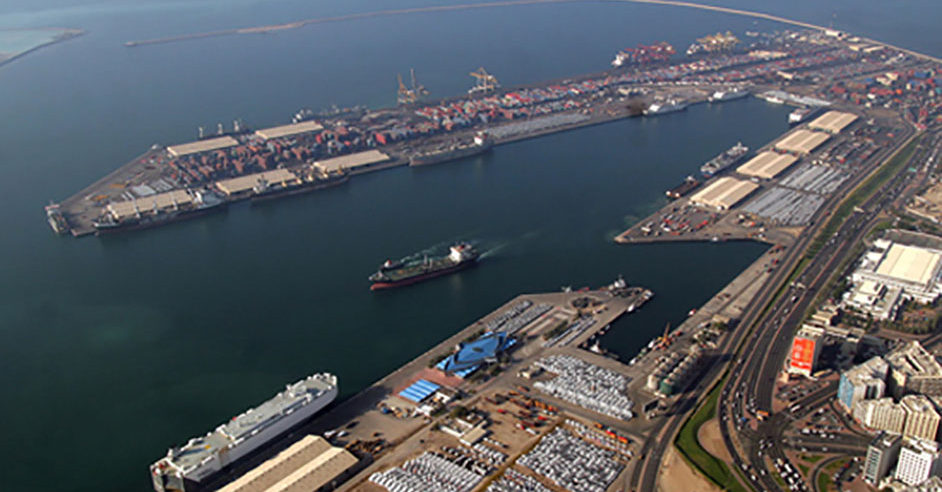Teekay Tankers Ltd. reported the Company’s results for the quarter ended March 31, 2025. As a result of the Company’s acquisition of Teekay’s Australian operations and management services companies (collectively, the Acquired Operations) on December 31, 2024, financial information (excluding non-GAAP financial measures) in this release related to all periods prior to December 31, 2024 has been retroactively adjusted or recast to include the Acquired Operations on a consolidated basis in accordance with Common Control accounting as required under GAAP
First Quarter of 2025 Compared to Fourth Quarter of 2024
GAAP net income and non-GAAP adjusted net income for the first quarter of 2025 decreased compared to the fourth quarter of 2024, primarily due to lower average spot tanker rates and the sale of six vessels during the fourth quarter of 2024 and the first quarter of 2025. In addition, GAAP net income for the first quarter of 2025 included a $39.0 million gain from the sale of four vessels compared to a $27.9 million gain from the sale of two vessels in the fourth quarter of 2024, as well as a $4.7 million unrealized loss on investment in marketable securities in the first quarter of 2025 compared to a $1.4 million unrealized gain in the fourth quarter of 2024.
First Quarter of 2025 Compared to First Quarter of 2024
GAAP net income and non-GAAP adjusted net income for the first quarter of 2025 decreased compared to the same period of the prior year, primarily due to lower average spot tanker rates, the sale of seven vessels and the redelivery of four chartered-in vessels at various times between the start of the first quarter of 2024 and the end of the first quarter of 2025. In addition, GAAP net income for the first quarter of 2025 included a $39.0 million gain from the sale of four vessels compared to a $11.6 million gain from the sale of one vessel in the first quarter of 2024, as well as a $4.7 million unrealized loss on investment in marketable securities in the first quarter of 2025.
CEO Commentary
“Teekay Tankers posted strong financial results for the first quarter of 2025, generating GAAP net income of $76.0 million and adjusted net income of $41.8 million,” commented Kenneth Hvid, Teekay Tankers’ President and Chief Executive Officer. “The tanker market progressively improved over the course of the quarter and into the second quarter due to an increase in non-OPEC+ production volumes, particularly in the Americas, and new U.S. sanctions against Russia and Iran, the combination of which led to longer voyage distances as Asian buyers sourced more crude oil from the Atlantic Basin. In addition, vessel supply further tightened as more vessels were drawn into the Russian trade as Urals crude dropped below the price cap of $60 per barrel, which permits them to trade without violating sanctions. The mid-sized tanker spot rates are experiencing counter-seasonal strength, reaching rates last seen in the first quarter of 2024.”
“Since the start of the year, we have continued to execute on our fleet renewal plan, which includes acquiring modern tonnage over time and selling older vessels. In the first quarter of 2025, we agreed to acquire a modern Korean-built LR2 vessel, which is scheduled to deliver in late-May 2025. Our pace of vessel sales has increased in 2025 as we have sold six older vessels for total combined proceeds of approximately $183 million, realizing estimated book gains on sale of approximately $53 million. While we recently have been more active in selling rather than buying vessels, we expect this trend to change over time as we see opportunities to acquire more modern tonnage.”
“Looking further ahead, while fleet supply fundamentals continue to look supportive, the medium-term demand outlook is uncertain given recent world events, including the imposition of tariffs by the U.S. and subsequent retaliatory tariffs, which increases the risk of a potential global recession. We expect these uncertainties will lead to continued volatility in spot tanker rates and asset prices. At Teekay Tankers, we are well positioned to continue earning cash flow with our low cash flow break-even levels and using our strong balance sheet to take advantage of emerging fleet renewal opportunities. In addition, we continue to return capital to shareholders as our Board of Directors has approved a special cash dividend of $1.00 per share in addition to our regular fixed quarterly dividend for a combined cash dividend of $1.25 per share.
Summary of Recent Events
In February and March 2025, the Company completed the sales of four vessels, including two 2009-built Suezmaxes, a 2006-built Aframax/LR2 and a 2007-built Aframax/LR2, for combined proceeds of $120.5 million. The combined gains on sales, which were reflected in our first quarter of 2025 results, were approximately $39 million.
In February 2025, the Company agreed to purchase one 2019-built Aframax-sized vessel. The vessel is expected to be delivered in the second quarter of 2025.
In March 2025, the Company agreed to sell one 2006-built Suezmax and one 2009-built Suezmax for $62.0 million. The 2006-built vessel was delivered in April 2025 and the 2009-built vessel was delivered in May 2025. The combined gains from these sales are estimated to be $14 million, which will be reflected in the second quarter of 2025 results.
The Company’s Board of Directors declared a fixed quarterly cash dividend in the amount of $0.25 per outstanding common share for the quarter ended March 31, 2025. In addition, the Board of Directors declared a special cash dividend of $1.00 per common share. These dividends are payable on May 30, 2025 to all of Teekay Tankers’ shareholders of record on May 19, 2025.
Tanker Market
Mid-size crude tanker spot rates improved during the course of the first quarter of 2025 and by the start of the second quarter had reached the highest level since the first quarter of 2024. Rising oil production, particularly from the Americas, and the imposition of U.S. sanctions on Russian and Iranian shipping since the beginning of the year has led to Asian buyers sourcing more crude oil from the Atlantic Basin, which resulted in increased mid-size tanker tonne-miles. In addition, fleet supply has tightened as more vessels have been drawn into Russian trading to replace sanctioned vessels and as the price of Urals crude has fallen below the price cap of $60 per barrel, allowing some owners to carry Russian crude without penalty.
In the near-term, we expect freight markets to remain well-supported by elevated tonne-miles and a continued tightening of fleet supply due to sanctions. The tanker market could also benefit from lower oil prices, which reached a three-year low at the beginning of April 2025 due to a combination economic uncertainty and the accelerated unwind of oil supply cuts from the OPEC+ group. Lower oil prices support the tanker market through reduced bunker fuel prices, which is our largest operational cost, and potentially higher oil demand. In addition, with current OECD inventories at near five-year lows, government and industry bodies may use this window of lower oil prices as an opportunity to rebuild oil inventories, driving tanker demand.
Looking further ahead, the medium-term demand outlook is highly complex given recent world events. The imposition of trade tariffs by the U.S., and subsequent retaliatory tariffs, have clouded the outlook for the global economy and for oil demand. While the outcome remains uncertain, industry analysts have adjusted their global economic and oil demand forecasts downwards with the International Energy Agency (IEA) cutting its 2025 global oil demand growth forecast from 1.0 million barrels per day (mb/d) to 0.7 mb/d.
The geopolitical landscape adds another layer of complexity, including the ongoing war in Ukraine, the U.S. “maximum pressure” campaign against Iran, a reduction in vessel transits through the Red Sea due to the fear of attack, and the theme of U.S. protectionism (including the proposal to target Chinese owners and Chinese-built vessels calling at U.S. ports). Any changes to these factors could impact the tanker market in the coming months, potentially adding to supply chain inefficiency, although it remains very difficult to predict how these events will unfold and what impact they will have on the tanker market.
The pace of tanker newbuild orders has slowed since the middle of 2024, with just 2.8 million deadweight tons (\dwt) of orders placed in the first quarter of 2025, the lowest quarterly total since the third quarter of 2022. Although the pace of tanker ordering has slowed, shipyards continue to receive orders in other shipping sectors and we estimate that global shipyard capacity is essentially full through 2027 and approximately 70% full for 2028. In addition, a lack of tanker scrapping means that the tanker fleet continues to age, with the average age of the global tanker fleet standing at 13.9 years as of April 2025, the highest since 2001. We believe the combination of the current orderbook, an aging tanker fleet, and constraints on available yard space should result in continued low levels of tanker fleet growth over the medium term. In summary, the Company believes that the near-term outlook for spot tanker rates remains positive. However, while fleet supply fundamentals continue to look supportive, there are economic and geopolitical uncertainties that make it difficult to predict how things will unfold for the tanker market in the medium term
Source: Teekay Tankers Ltd.




